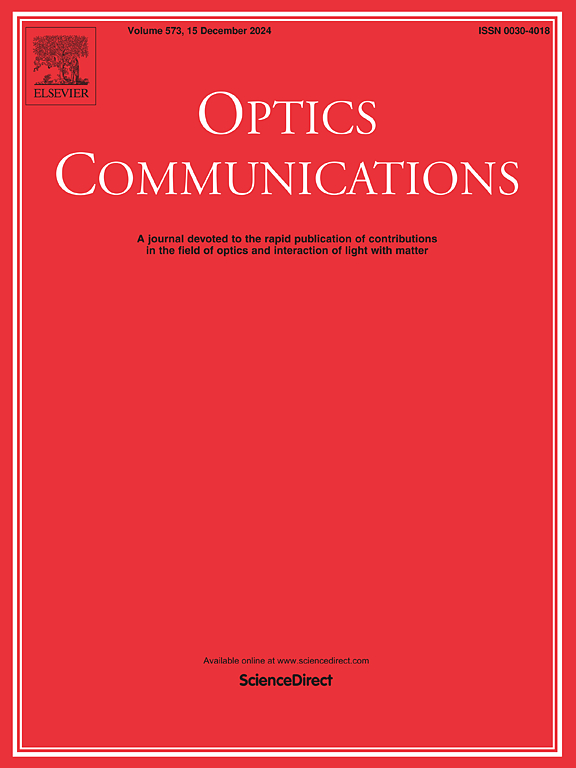Stable vortex-array with four singularities generated in a Raman microchip laser
IF 2.2
3区 物理与天体物理
Q2 OPTICS
引用次数: 0
Abstract
Optical vortex-arrays with multiple singularities have potential applications in high-capacity optical communication, particle manipulation and high-resolution measurement. Vortex-arrays with desirable spatial distribution of singularities and operating at new wavelengths further extend their applications. Here, an optical vortex-array with four singularities has been achieved in a Yb:YAG/YVO4 Raman microchip laser pumped with a tilted annular beam. Stable vortex-array with four singularities distributed in a square shape is achieved with simultaneous oscillation of frequency-degenerate modes in an asymmetric resonator with stimulated Raman scattering effect. Stable vortex-array with four singularities oscillates in a wide incident pump power (Pin) range from 2.8 to 5.7 W. The highest output power is 0.34 W with an optical efficiency of 5.9% for vortex-array with four-singularities at Pin = 5.7 W. The Raman laser oscillates in TEM00 mode at Pin < 2.8 W. Vortex-array with four singularities becomes unstable at Pin > 5.7 W and vortex-array with six singularities oscillates at Pin > 6 W. The highest Raman spectral width of vortex array laser is up to 16.8 nm, and 51 longitudinal modes oscillate. Inversion population is extremely important for stability of singularity-controllable Raman laser by transverse-mode locking, the experimental result is consistent with theory in transverse laser and interference pattern. This work of achieving vortex-array with transverse-mode locking creatively provides a compact Raman laser source, which endows more flexibilities in vortex laser applications.
求助全文
约1分钟内获得全文
求助全文
来源期刊

Optics Communications
物理-光学
CiteScore
5.10
自引率
8.30%
发文量
681
审稿时长
38 days
期刊介绍:
Optics Communications invites original and timely contributions containing new results in various fields of optics and photonics. The journal considers theoretical and experimental research in areas ranging from the fundamental properties of light to technological applications. Topics covered include classical and quantum optics, optical physics and light-matter interactions, lasers, imaging, guided-wave optics and optical information processing. Manuscripts should offer clear evidence of novelty and significance. Papers concentrating on mathematical and computational issues, with limited connection to optics, are not suitable for publication in the Journal. Similarly, small technical advances, or papers concerned only with engineering applications or issues of materials science fall outside the journal scope.
 求助内容:
求助内容: 应助结果提醒方式:
应助结果提醒方式:


